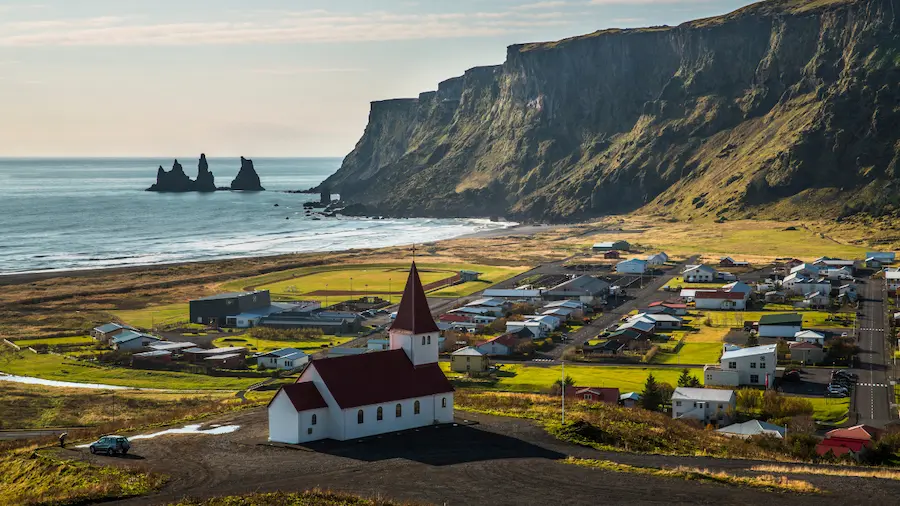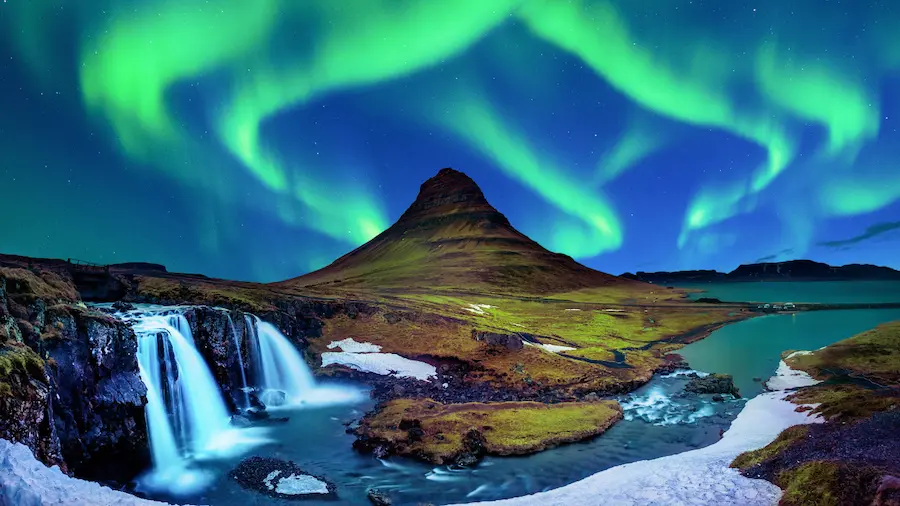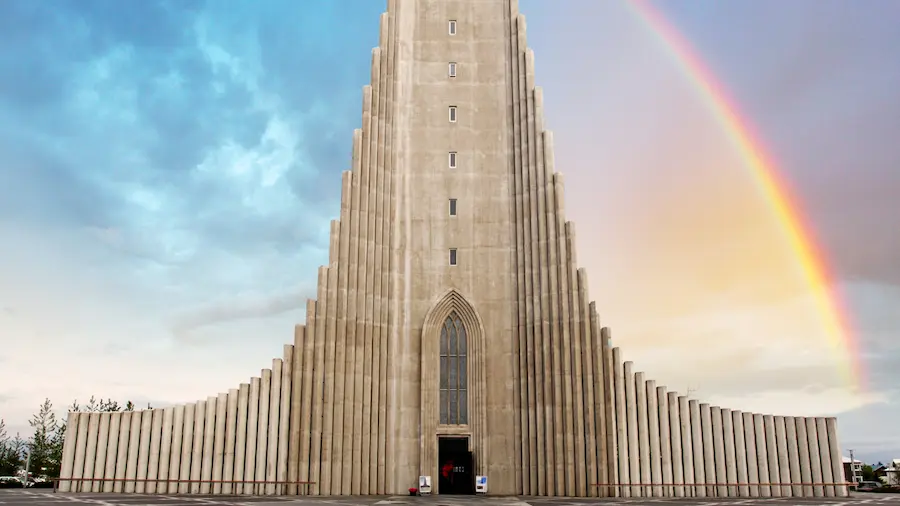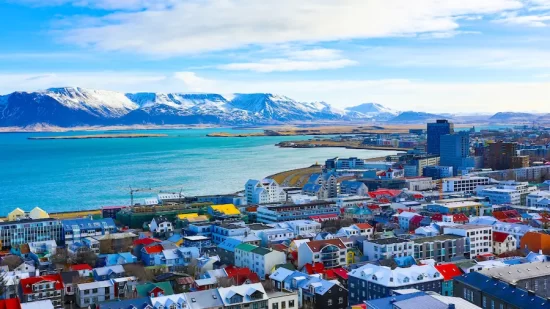Iceland is a small Nordic Island nation located in the Northern Atlantic Ocean. It has become increasingly popular as a Tourist Destination in recent times. Despite its relatively small size and population, Iceland has a wide range of unique and captivating features that draw visitors from all around the world. In this article, we will explore 8 things that Iceland is famous for, from its stunning natural landscapes to its rich cultural heritage and much more.
#1 Breathtaking Natural Landscapes

Iceland is famous for its otherworldly and breathtaking natural landscapes. One of the most iconic natural features is its collection of geysers and hot springs. Including the world-famous Geysir and the active Strokkur geyser. These natural wonders shoot hot water high into the air, creating a mesmerizing spectacle for visitors.
The country is also famous for its vast glaciers, with Vatnajökull being the largest in Europe. These glaciers have created numerous glacier lagoons, where people can witness massive icebergs breaking off and floating gracefully. The Jökulsárlón Glacier Lagoon is a prime example of this enchanting phenomenon.
Iceland’s volcanic activity is another defining feature. Moreover, the island is home to numerous volcanoes, some of which are still active. The 2010 eruption of Eyjafjallajökull, which disrupted air travel across Europe, brought international attention to Iceland’s geological activity. The rugged landscapes, lava fields, and craters that result from volcanic eruptions are a testament to the country’s geological diversity.
#2 Land of Ice and Fire

Iceland’s nickname is ‘Land of Ice and Fire’. This is because Iceland consists of both Icy glaciers and Volcanos. Creating a unique blend of icy landscapes and fiery eruptions. It’s a place where you can explore ice caves in the morning and witness volcanic eruptions in the evening. Offering an unparalleled experience for adventurous travelers.
#3 Northern Lights

If we are talking about Nordic nations and not talking about the Northern Lights, then it’s an incomplete talk. Northern Lights are also called Aurora Borealis and lots of people come to Iceland only to experience the beautiful Northern Light show in the sky at night. The best time to see the Northern Lights is during the winter when the nights are the longest and darkest. Tour operators offer guided Northern Lights tours to maximize the chances of experiencing it.
#4 Surprising Wildlife

While Iceland’s harsh climate and rugged terrain may not seem favourable to wildlife, the country is home to a surprising variety of animal species. One of the most iconic animals found in Iceland is the Icelandic horse, known for its small stature, friendly demeanor, and unique gait called the Tolt. Additionally, Iceland is a haven for birdwatchers, with puffins, Arctic terns, and other seabirds inhabiting the coastal cliffs and islands.
Iceland’s waters are full of marine life, including whales and seals. Whale-watching tours are a popular activity for tourists, offering a chance to see humpback whales, orcas, and minke whales in their natural habitat.
#5 Waterfalls Paradise

Iceland is famous for Waterfalls and is often referred to as the “Land of a Thousand Waterfalls”. That’s because it has a sheer number of cascades scattered throughout the country.
Some of the most famous waterfalls include Gullfoss, a massive two-tiered waterfall, and Seljalandsfoss, which visitors can walk behind it for a unique perspective. Skogafoss, with its thundering flow, is another must-see waterfall that captivates travelers with its raw power and beauty.
#6 Hotbed of Geothermal Activities

Geothermal Activities not only powers Iceland but also provides a unique bathing experience. The famous geothermal spa, Blue Lagoon is located in the lava field and has its water heated naturally. Water contains several natural minerals and the name comes from its Blue color. It is well known for relaxing and rejuvenating your body.
Additionally, Iceland has several hot springs and geothermal pools. Many of these are open for public use, allowing visitors to soak in the warm, therapeutic waters while surrounded by stunning natural landscapes.
#7 Viking Culture and History

Iceland has a rich cultural heritage deeply rooted in its Viking history. The Icelandic sagas, ancient tales of heroic exploits and family conflicts, provide a glimpse into the country’s past and are an essential part of Icelandic literature. Visitors can explore this history through museums like the National Museum of Iceland and Árni Magnússon Institute for Icelandic Studies.
The Alþingi, established in 930 AD, is one of the world’s oldest parliaments and played a significant role in shaping Iceland’s political landscape. The historical Þingvellir National Park, where the Althing convened, is a UNESCO World Heritage Site and a place of cultural and historical significance.
#8 Wholesome Icelandic Cuisine

Icelandic cuisine may not be as popular as that of some other countries. However, it offers a unique food experience. Iceland’s famous Traditional dishes include hákarl (fermented shark), svið (sheep’s head), and hangikjöt (smoked lamb). For the more adventurous eaters, these dishes can be a fascinating taste of Icelandic heritage.
Along with that, Iceland also offers more familiar options like fresh seafood, lamb, and dairy products. Skyr, an Icelandic yogurt, is a popular and healthy snack enjoyed by locals and visitors alike.
Do you know that Iceland folks are one the tallest people? Check out Countries with the tallest heights.
Hope you liked this article about Iceland. Don’t forget to check out more such interesting topics only at Life on ConceptDive.














